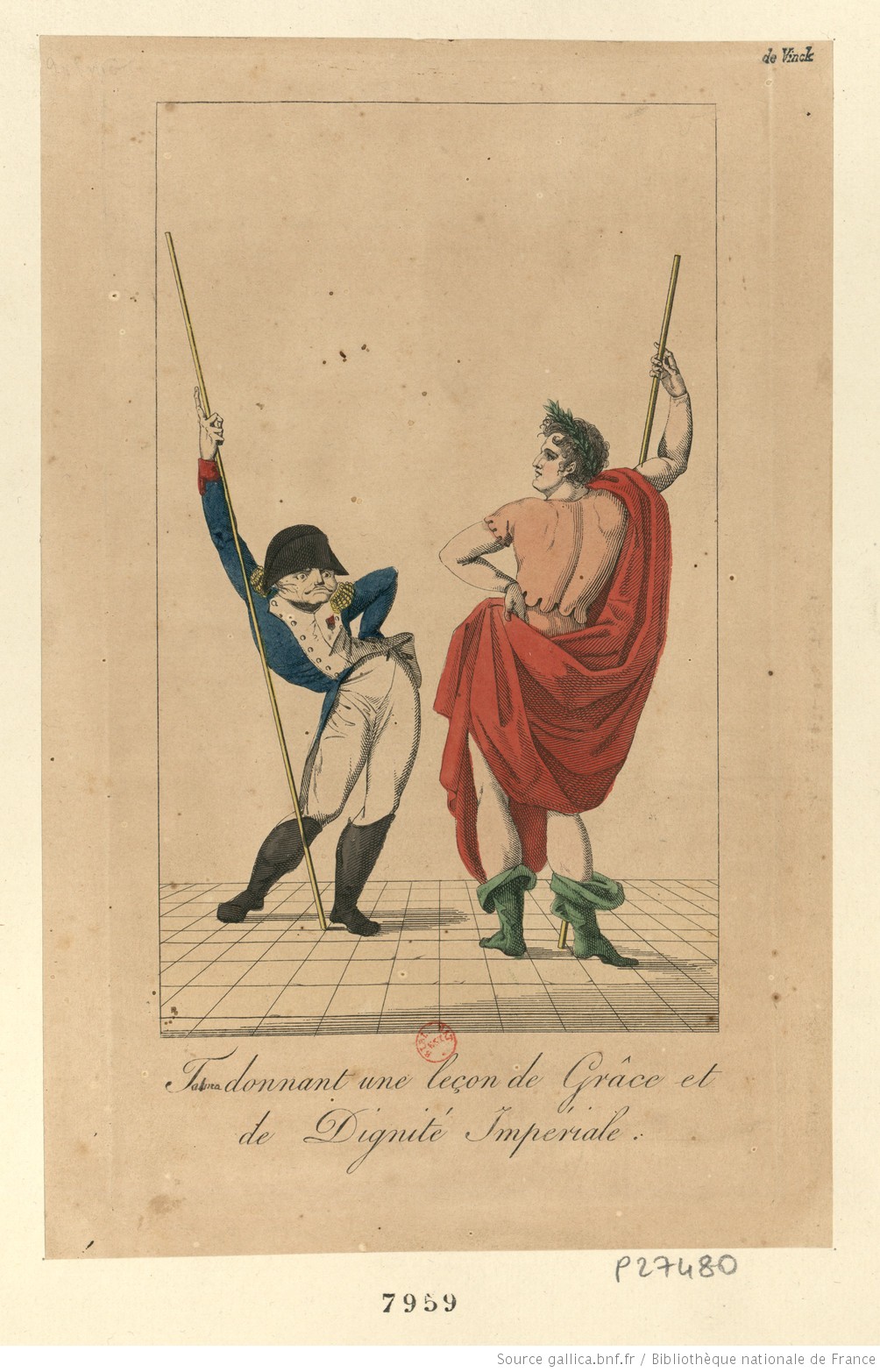13.04.2022-Literary and theatrical representations of Napoleon (Consulate and Empire)
13.04.2022-Literary and theatrical representations of Napoleon (Consulate and Empire)

Data inizio: 13/04/2022
Data fine: 13/04/2022
Ora: 15:00-17:00
Link Zoom
 -Download
-Download
Speakers and Abstracts
-
Katherine Astbury, University of Warwick Napoleon Harlequin or the theatrical metaphor In 1814 a close link was established between Napoleon and popular theatre forms as a way of reinforcing his lack of authenticity. Commentators such as Nodier rejected popular theatre as being for the ears and eyes only, a spectacle that offers only ‘lukewarm and common emotions’, in other words ones that are feigned. By emphasising the illusion and falsity of fairground theatre, and by linking Napoleon and those close to him (Cambacerès, for example) to the commedia dell’arte tradition in particular, the pamphleteers and cartoonists of the First Restoration were able to highlight the inferiority and ridicule of the imperial regime. However, during the Hundred Days Bonapartists retaliated and quickly reclaimed theatrical references as a visual tool. The present analysis will focus on the evolution and metamorphoses of this metaphor in order to better grasp the polyvalences at the heart of this imagery.
-
Paola Perazzolo, University of Verona From Bonaparte to Napoleon: the public reception of 18 Brumaire as an example of myth-making Starting from the day after the coup d'état of 18-19 Brumaio of the year VIII, the journalistic, iconographic and literary production celebrates Bonaparte as the savior hero of the Republic in danger. Even the representation of numerous plays of circumstance helps to exalt the general, stigmatize the Jacobins as a danger to the homeland, criticize the instability and ineffectiveness characterizing the Directory. The dramatic world, at the time used by the institutions as one of the most powerful means of communication, aligns itself with the periodical press and public discourse, contributing in an important way to legitimize the coup d'état and to corroborate the already existing myth of Bonaparte, the savior hero, super partes and peacemaker (see Ph. Dwyer, J. Tulard). The lightness of vaudeville and a "slogan script" echoing well-known formulas and facts of the day convey a political interpretation favorable to the First Consul and his seizure of power. As Muret recalls: "le théâtre, qui avait tant célébré la République, l'enterrait gaiement en couplets".
-
Vincenzo De Santis, University of Salerno Bonaparte/Charlemagne. Construction and critique of the myth before and after the imperial coronation In his Bonaparte crossing the Great St Bernard (1801-1803), David painted engraved in a stone the name Karolus Magnus alongside Bonaparte and Hannibal. The assimilation of Bonaparte to Charlemagne and Hannibal, the two great heroes who conquered the Alps in ancient and medieval times, ideally places Bonaparte in their lineage. Ten years later, the caricature Le Courrier du Rhin shows Napoleon running away carrying the effigy of Charlemagne on his staff. From historical genre to caricature, the images of the two French emperors overlap. The comparison between Bonaparte and Charlemagne already appears in the Moniteur (23 ven. year VI) in relation to the Italian campaign, the most advantageous peace "that France has made since Charlemagne". The assimilation of the two characters is a common feature of propaganda literature. At the same time, the misuse of the metaphor of the ‘founding hero’ became a cliché among anti-Bonapartists. Through the study of propaganda literature and anti-Bonapartist criticism, I intend to examine the mechanism behind the analogy linking the two French emperors. The analysis will then focus on the system of interaction between the different means of expression of political discourse, at a time when France is creating, as Jean-Claude Bonnet’s studies show, a shared cultural heritage based also on the cult of origins.